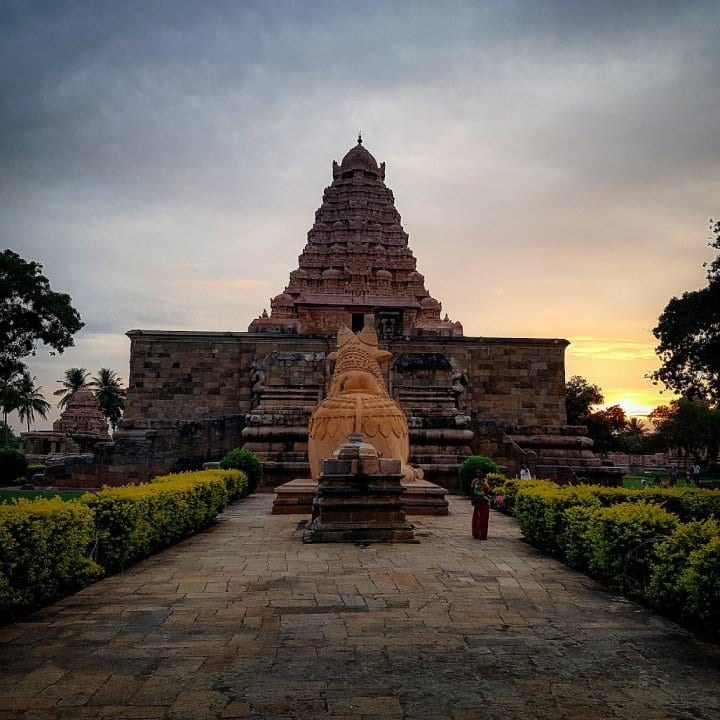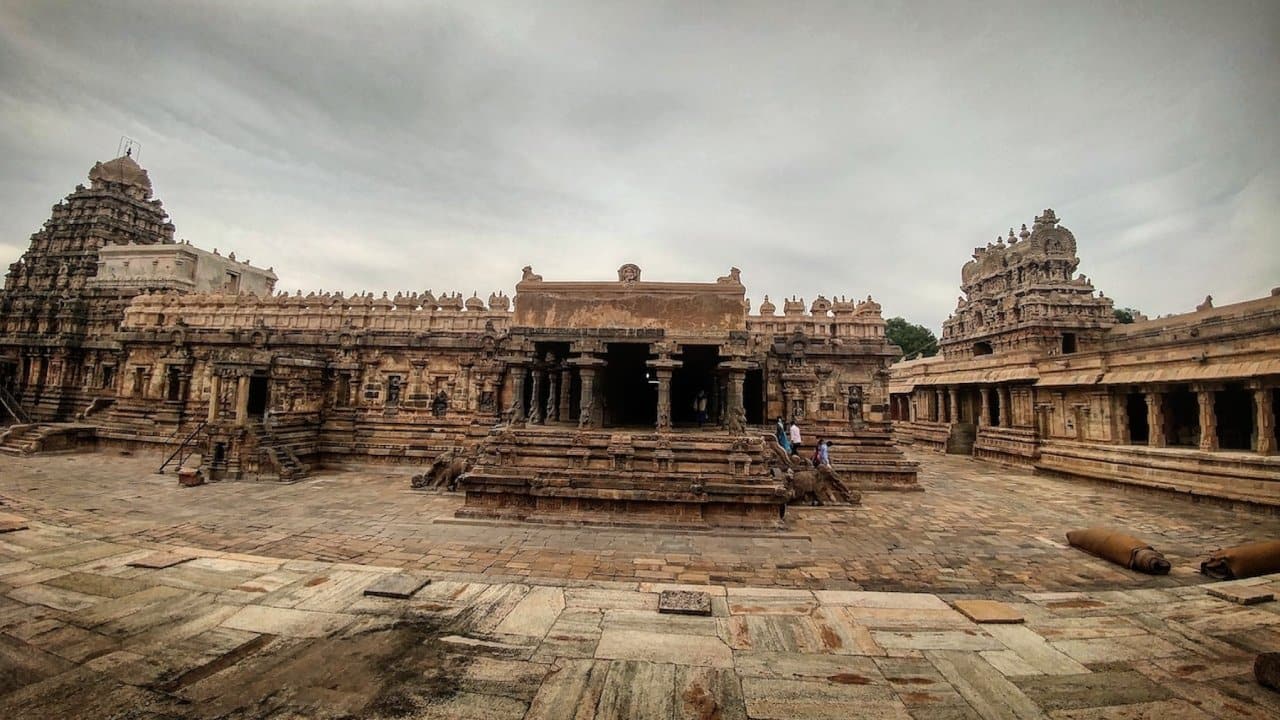



It might have taken the Ponniyin Selvan (PS) phenomenon to put the spotlight back on one of India’s most illustrious kingdoms. It has rekindled the romance with the Cholas. By the 11th century, the Chola empire didn’t just cover large parts of southern and western India, but wielded significant clout across the ocean as far wide as the Maldives and Indonesia. The Cholas were among India’s first thalassocracies or maritime superpowers. Aside from their successful naval campaigns, they also left an indelible imprint with their breath-taking architecture. You can explore it over a weekend; the trail begins in Thanjavur.
Also read: Temple run with 'Ponniyin Selvan'
The Big templeIn 1987, the Brihadeeshwarar temple became one of India’s first UNESCO recognized World heritage sites along with two other temples that are now referred to as the ‘Great Living Chola temples’. ‘Living’ because these three temples continue to exist in almost the same shape and form since they were built and are active places of worship. Locals call it the ‘Periya koil’ (The Big Temple). This architectural masterpiece was constructed in just eight years. The main shrine of this temple is a staggering 216 feet tall and built entirely in granite. The kumbam (the bulbous capstone) alone weighs about 80 tonnes.
 Brihadeeshwarar Temple (Photo by Ashwin Rajagopalan)
Brihadeeshwarar Temple (Photo by Ashwin Rajagopalan)Modern-day architects continue to be puzzled about how such a large heavy stone was placed on top of this structure. The mystique doesn’t end there; the closest source of granite is at least 60 km away and yet a whopping 60,000 tonnes of granite was used to build this temple, including a large single block that was used to carve out the Nandi statue at the entrance of the shrine that is 16 feet long and 13 feet high. There’s no better time to be here than sunrise, as the temple dome gets accentuated by the first rays of light. Sunset is an equally photogenic time, as I’ve discovered during my last two visits to one of my favourite temples in Tamil Nadu.
Capital connection: Gangaikonda CholapuramRajendra Chola I succeeded his father (Raja Chola) in 1014 and consolidated the influence of the Chola dynasty. He tasted success in his campaigns in the north of India and won a strategic battle over the Pala Dynasty. It was this success that earned him the title Gangaikonda Chola (‘bringer of the Ganges). Which is why he called his new capital (that he established in 1025 AD) Gangaikonda Cholapuram where he built a slightly smaller version of the Brihadeeshwara temple (with the same name) around 1035 AD that stands at 180 feet tall.
 Sunset at Gangaikonda Cholapuram. (Photo by Ashwin Rajagopalan)
Sunset at Gangaikonda Cholapuram. (Photo by Ashwin Rajagopalan)Some of the temple’s highlights include intricate sculptures (of Chandesa Anugraha Murthy and Saraswati) that are found in the niches near the northern entrance. It’s now a nondescript village; the only connection with its illustrious past is the imposing temple. I would suggest reaching here in time for sunset for the best images. If you’re planning to make a pit-stop in Pondicherry, you could time yourself for sunrise (it’s 90 minutes away from Thanjavur) and then do the two-hour drive to Pondy for breakfast.
The epitome of Chola architecture?If there’s one temple where you’re likely to put your wide-angle lens or panorama mode into overdrive, it’s the Airavatesvara temple at Darasuram (an hour away from Thanjavur). This temple was completed during the reign of Rajaraja II (1143-1173 AD). Most experts consider this the pinnacle of Chola architecture. It may not be as imposing as the other two temples but is highly ornate and features intricate carvings. The front mandapa (conceptualized as a chariot with wheels) is the highlight. I soon discovered that the temple’s layout and design are a photographer’s delight.
 Airavatesvara temple at Darasuram (Photo by Ashwin Rajagopalan)Detours
Airavatesvara temple at Darasuram (Photo by Ashwin Rajagopalan)Detours· The Thanjavur Marathas ruled this region between the 17th and 19th centuries. The Sarasvathi Mahal library, one of Asia’s oldest, is a treasure trove and received the patronage of Serfoji II one of the last great Maratha kings. Among the many rare manuscripts are documented recipes, culinary insights from the royal kitchen that date back two centuries. It’s part of the Palace complex that also includes the grand Durbar Hall and Art Gallery which houses rare stone and bronze sculptures from the Chola Era.
· Thanjavur’s musical icon, the Thanjavur veena that takes 15 days to handcraft. It’s the only veena to have been recognized with a GI tag (a geographical indication is a sign used on products that have a specific geographical origin and possess qualities or a reputation that are due to that origin). You can visit one of Thanjavur’s veena makers who keep this rich tradition alive.
Stay· Great Trails by GRT hotels: On the banks of the Vennar river with unhindered river views from most of their villas. The resort offers Tamil Nadu-style banana leaf meals and a smattering of Sri Lankan signatures like the watalappam and string hoppers.
· Svatma: is a heritage home that has been reimagined as a luxury hotel. The hotel pays homage to the mighty Chola empire with showstopper Chola-style bronzes and a swimming pool that is reminiscent of a temple tank.
Eat· Coffee Palace: Kumbakonam (an hour away) is famous for its filter coffee – also called degree coffee. Coffee Palace serves the best filter coffee in town; their crispy rava dosa is also a big draw.
· Thevar’s Biryani: you don’t have to go too far from the temple for the best biryani in Thanjavur. It’s crafted with the small grain Seeraga Samba rice and truly hits the spot.
Discover the latest Business News, Sensex, and Nifty updates. Obtain Personal Finance insights, tax queries, and expert opinions on Moneycontrol or download the Moneycontrol App to stay updated!
Find the best of Al News in one place, specially curated for you every weekend.
Stay on top of the latest tech trends and biggest startup news.